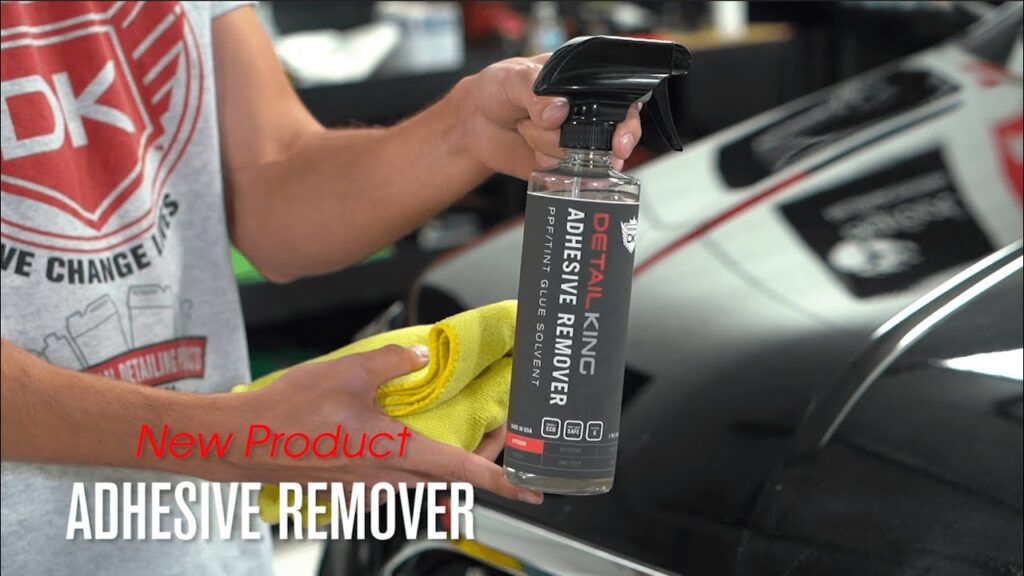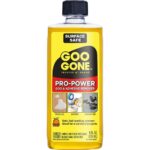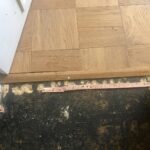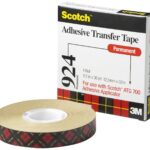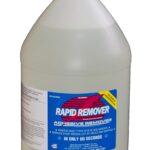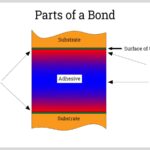Removing PPF adhesive is a relatively simple process that can be done with the right tools. The first step is to heat up the adhesive with a heat gun, taking care to only heat the adhesive and not the PPF itself. This will help to soften the adhesive and make it easier to remove. Once the adhesive is sufficiently heated, use a plastic scraper to carefully scrape away the PPF from the surface. Take special care to not scratch the surface of the car or truck.
Once the majority of the PPF has been removed, use a degreaser or solvent to further loosen the remaining adhesive. Gently scrub the remaining adhesive away using a soft brush or cloth. If any of the adhesive still remains, use isopropyl alcohol or a similar solvent to help break down the adhesive. Allow the solvent to sit on the adhesive for a few minutes before scrubbing away any remaining residue. Finally, use a microfiber cloth to wipe away any remaining residue and to buff the car or truck to a smooth finish. With the right tools, removing PPF adhesive is a relatively easy task.
How to remove clear bra glue from car
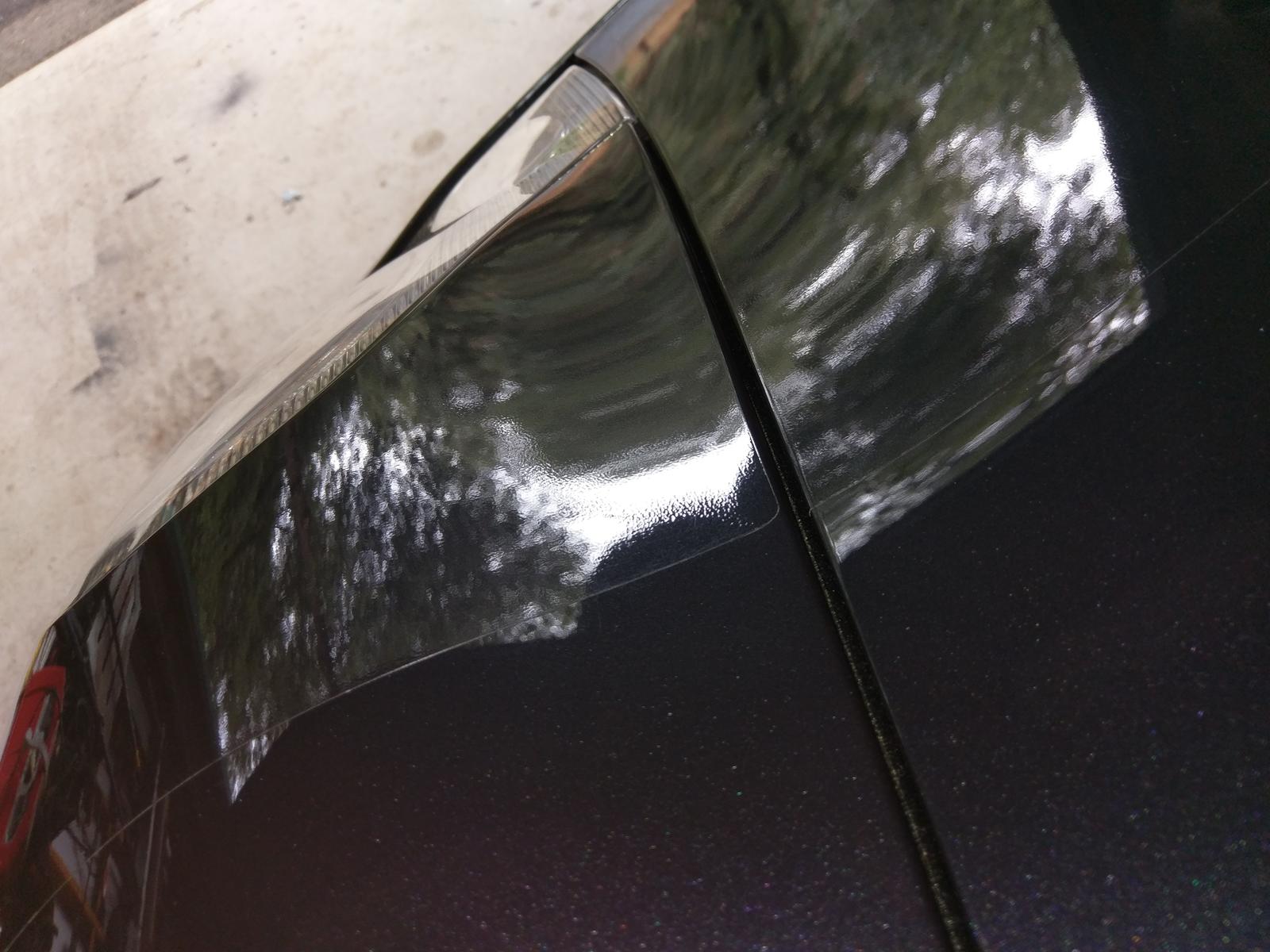
Removing PPF adhesive from your car can be a tricky process. But with the right techniques and materials, you can easily remove clear bra glue. First, you’ll want to make sure that you have the right supplies. This includes rubbing alcohol, a razor blade, and a plastic scraper. You’ll also need a soft cloth or sponge for wiping away the residue.
Start by cleaning the area with rubbing alcohol. This will help to break down the adhesive. Once the area is clean, use the razor blade to gently scrape away the residue. Be sure to use a light hand and move in a single direction. Next, you’ll want to use the plastic scraper to scrape away any remaining glue. This should be done with a gentle force, and in the same direction. Once you’ve scraped away all of the residue, you should have a smooth surface. Finally, use a soft cloth or sponge to wipe away any remaining residue. Make sure to use a circular motion to remove the glue. And you’re all set! With these simple steps, you should have no trouble removing PPF adhesive from your car.
Can you remove clear bra from car?
Removing adhesive from a clear bra, or paint protection film (PPF), can be a challenging task. If you decide to remove clear bra from your car, you’ll need to be careful to avoid damaging the paint underneath. Start by heating the PPF with a hairdryer or heat gun set to low heat. This will help loosen the adhesive so it is easier to remove. Then, use a razor blade or plastic scraper to gently scrape off the adhesive.
Be sure to use light pressure so you don’t scratch the paint. Once you have removed as much of the adhesive as possible, you’ll need to clean the area with a wax and grease remover. This will help to remove any remaining residue. Then, you can use a clay bar to remove any remaining contaminants. Finally, to protect the paint, you can apply a coat of wax or paint sealant. This will help preserve the paint and keep it looking its best. Removing adhesive from clear bra can be a time-consuming job, but the results will be worth it. With a bit of patience and some elbow grease, you can successfully remove PPF adhesive from your car without damaging the paint underneath.
How much does it cost to remove a clear bra on a car?
Removing a clear bra (ppf) adhesive from a car can be a tricky process. It is recommended to consult a professional to ensure the best results. The cost of removing a clear bra from a car can vary depending on the size of the car, the amount of time it takes to remove it, and the techniques and materials used. Generally, you can expect to pay between $50 and $150, though some may charge as much as $500. It is possible to remove a clear bra yourself, but it can be a tedious and time-consuming process.
You will need specific tools and materials to get the job done, such as a heat gun, specialized solvents, and razor blades. If you attempt the job yourself, make sure to do plenty of research before you start so that you know exactly how to do it safely. If you choose to have a professional remove the clear bra, make sure to shop around to get the best price. Be sure to ask if they can guarantee the job and what kind of materials they will use. With a professional, you can expect a high-quality job that will leave your car looking like new.
How do you remove adhesive from a plastic car?
Removing adhesive from a plastic car can be a tricky job. For plastic cars with a clear protective film, the best way to remove the adhesive is to use a product specifically designed for this purpose. Start by cleaning the car with a plastic-safe cleaning product and rinse it with water. Then, you will need to apply a chemical adhesive remover to the area with the adhesive. Rub the adhesive remover onto the plastic car with a clean cloth, using circular motions.
Let it sit for a few minutes to allow the adhesive to loosen. Once the adhesive is softened, you can use a plastic razor blade or a putty knife to scrape away the adhesive. You may need to use a solvent-based adhesive remover if the adhesive is particularly stubborn. After you have scraped away the adhesive, make sure to wipe the area clean with a damp cloth. Finally, use a microfiber cloth to buff the surface of the plastic car and make sure there is no residue left. With the correct product and a bit of effort, you can easily remove the adhesive from a plastic car.
How do you get a clear bra off your body?
Removing a clear bra, also known as PPF (paint protection film) adhesive, can seem like a daunting task. However, with the right tools and a little bit of patience, it’s actually quite straightforward. The first step in removing PPF adhesive is to use a heat gun or hair dryer to soften the adhesive. You should be careful to keep the heat gun at least six inches away from the adhesive, and move it constantly to avoid burning yourself or the PPF. Once the adhesive has softened, you can begin to peel it away.
If it’s not coming off easily, you can use a plastic putty knife or scraper to assist in the process. Be sure to always use a plastic tool and not a metal one, as metal tools can damage the PPF. Once you have removed the bulk of the adhesive, you should use a specialized adhesive remover to get rid of any residue. This will help ensure all the adhesive is gone and your body is free of any sticky residue. Finally, you should clean the area with a soft cloth and soapy water to ensure all the adhesive remover is gone. Once you are finished, your body should be free of any PPF adhesive and ready for a new clear bra.
How do you remove protective film from the front of a car?
Removing protective film from the front of a car can be a tricky task. It’s important to remember, however, that taking the time to properly remove the film can have numerous benefits. Firstly, you will need to gather the right materials. This includes a heat gun, masking tape, plastic scraper, and a cleaning cloth. Once you have all the necessary materials, you can begin the process of removing the protective film.
You should start by using the heat gun to weaken the adhesive before gently peeling it away with your fingers or a plastic scraper. Be sure to work slowly to avoid damaging the paintwork underneath. After the adhesive has been removed, you can use the masking tape and plastic scraper to remove any remaining residue. Once the residue is gone, use the cleaning cloth to remove the film from the car. Removing protective film from the front of a car is a time consuming task, but if done properly it can be beneficial in protecting the car’s paintwork from future damage. With the right materials and a bit of patience, you can keep your car looking its best for years to come!
How to remove paint protection film adhesive
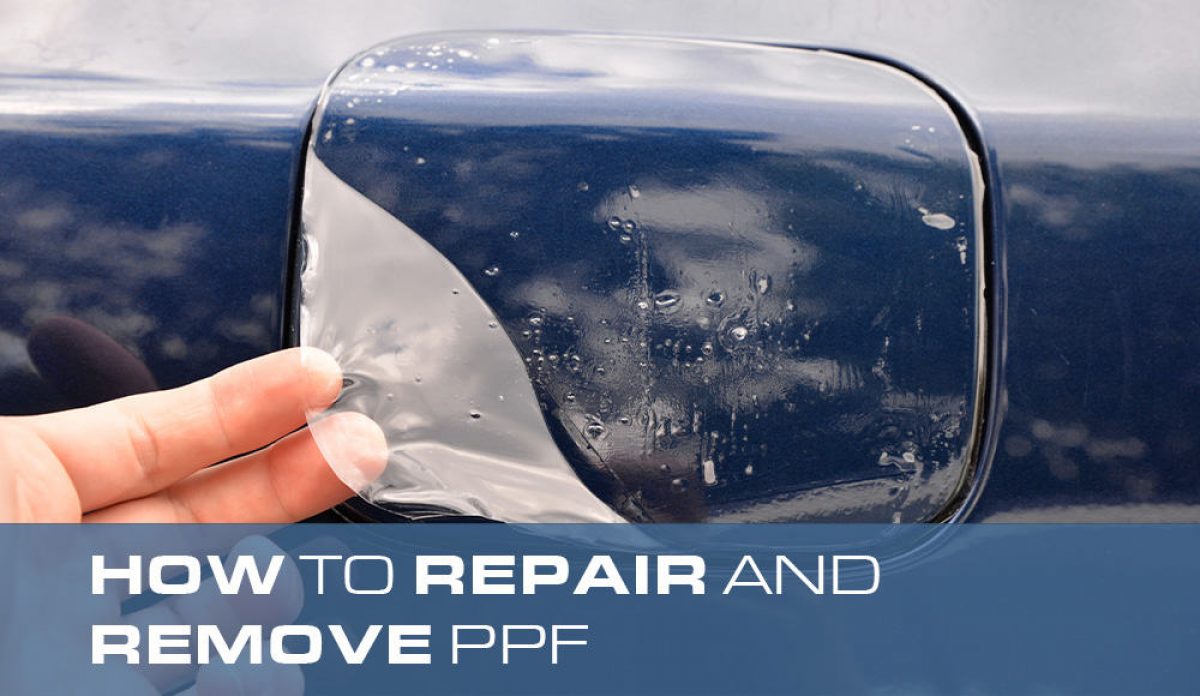
Removing paint protection film adhesive can be a tricky process. It’s important to follow the correct steps to ensure a successful removal. Firstly, you’ll need to warm up the adhesive. This can be done by using a heat gun or hair dryer. Make sure to keep the heat source at least 4 to 6 inches away from the film surface so as to not damage it.
Once the adhesive is warmed up, use a plastic tool to gently scrape it off. You can use a plastic spatula or a razor blade, though be sure to use gentle pressure to avoid damaging the surface. Afterwards, use an adhesive solvent to dissolve the remaining adhesive. Follow the solvent’s instructions to ensure that it is used safely and correctly. Finally, you’ll need to clean any remaining residue with a wax-free cleaner and a microfiber towel. This will help loosen any remaining residue and leave the surface looking clean and free of any residue. By following these steps, you can easily remove paint protection film adhesive and restore the surface’s original condition.
What is the easiest way to remove paint protection film?
Removing paint protection film (PPF) adhesive can be a daunting task, but it doesn’t have to be complicated. The easiest way to remove PPF adhesive is to start by using a heat gun or hair dryer to heat up the adhesive. This will soften the adhesive and make it easier to peel away. Once the adhesive has been softened, use a plastic razor blade to lift and scrape away any excess adhesive. Start from the edges and slowly move toward the center.
Be sure to use light pressure and not to press too hard on the plastic razor blade. Once most of the adhesive has been removed, use a citrus-based adhesive remover or a mild solvent like denatured alcohol to get rid of the remaining pieces of adhesive. Make sure to apply the solution to a soft cloth and gently rub it onto the surface. If the surface has been damaged during the removal process, use sandpaper to sand the area smooth. When the area is finished, use a rubbing compound to restore any shine that may have been lost. Finally, if there are any stubborn pieces of adhesive that are difficult to remove, use a steam cleaner to heat them up and help them to come off with ease. This is the easiest way to remove paint protection film adhesive and will help you to achieve the best results.
Can you remove 3m paint protection film?
Removing 3M paint protection film (PPF) can be a tricky process if not done correctly. The first step is to remove the adhesive that holds the PPF in place. This is done by applying a heat gun to the PPF in a circular motion, gradually increasing the temperature of the adhesive. The heat will cause the adhesive to become softer and easier to remove. After the PPF has been heated, you can use a razor blade to scrape off the adhesive residue.
Make sure to use a gentle hand to avoid scratching the paint underneath. Once the adhesive has been removed, you may need to use a plastic razor blade to remove any remaining residue from the paint surface. Again, make sure to be gentle and use a light touch to avoid damaging the paint. If necessary, you may want to use a solvent or degreaser to help remove any remaining residue. After the adhesive and residue have been removed, you need to clean the area with a soap and water mixture to ensure that no residue remains on the paint surface. You should then apply a wax or polish to the area to restore the paint’s shine. Finally, you should use a wax or sealant to protect the paint and ensure that the PPF will remain in place. Make sure to follow the manufacturer’s directions when applying the wax or sealant. This will help to ensure that the PPF remains in place and is not damaged by the elements. In conclusion, removing 3M paint protection film can be a time-consuming process, but with the right materials and techniques, it can be successful. Taking the time to properly remove the PPF and its adhesive will help to preserve the paint beneath, ensuring it looks its best for years to come.
What are the disadvantages of paint protection film?
Paint protection film (PPF) is a popular way to protect car paint from scratches, abrasions, and other damage. However, while it is an effective way to preserve the look of a car, it can also be difficult to remove when it is time to replace it. One of the primary disadvantages of PPF is that it is prone to yellowing over time, which can make a car look older than it actually is. Additionally, it is difficult to remove PPF once it is applied, as it is generally bonded to the surface with an adhesive. The removal process can take several hours, or even days, and requires special chemical solvents to break down the adhesive.
Removing PPF adhesive also requires specific tools and techniques to avoid damaging the paint or surface underneath. This can be difficult for inexperienced do-it-yourselfers, as special care must be taken to ensure the paint or surface is not damaged in the process. PPF adhesive can also be hard to remove from certain surfaces, such as aluminum and chrome. In these cases, the adhesive may need to be sanded down before it can be removed, which can be a time consuming and messy process. Furthermore, PPF adhesive can leave behind a sticky residue that can attract dust and other contaminants. This residue must be removed to prevent the dirt and debris from becoming embedded in the paint, which can be difficult to do without the proper tools. In summary, while PPF is an effective way to preserve the look of a car, it can be difficult to remove when it is time to replace it. The removal process can take several hours, or even days, and requires special chemical solvents and tools to avoid damaging the paint. Furthermore, PPF adhesive can leave behind a sticky residue that can attract dust and dirt, making it difficult to clean.
How to remove paint protection film from car paint?
Removing paint protection film (PPF) from car paint can be a tricky job. It is important to take your time and use the correct techniques to ensure that the paintwork on your car remains intact. To start the process of removing PPF adhesive, you will need a razor blade or a plastic scraper, as well as a heat gun or a hairdryer. Begin by heating up the adhesive with the heat gun or hairdryer, which will help to soften it and make it easier to remove. Once the adhesive has been softened, you can use the razor blade or plastic scraper to carefully remove the PPF from the car paint.
Take care not to press down too hard and be sure to scrape in the same direction, otherwise the paint may become scratched. Once you have scraped away as much of the PPF as possible, you may need to use a solvent-based adhesive remover to remove any remaining residue. Apply the remover to a cotton cloth and gently rub it into the area to remove any remaining adhesive. Finally, you can use a clean cloth and some car wax to restore the shine to your car paint. Make sure to wax the entire car, not just the area where you removed the paint protection film. Following these steps will help ensure that your car is returned to its former glory.
Can paint protection film (PPF) be removed?
Paint protection film (PPF) is a thin clear film applied to the surface of a vehicle to help protect the paint from damage caused by road debris, stones and other environmental factors. The film is usually applied with a special adhesive. Removing PPF adhesive can be a difficult task, and care should be taken to ensure that the underlying paint is not damaged. The best way to remove PPF adhesive is to start by heating the film with a heat gun or hair dryer. This will help to soften the adhesive and make it easier to remove.
Once the film is heated and softened, you can use a plastic razor blade or a scraper to peel the film away from the surface of the vehicle. Make sure to go slowly and be gentle as you remove the film; if you go too fast you could risk scratching the paint. After the majority of the PPF film has been removed, you should use a solvent to dissolve any excess adhesive. A product such as Goof Off is often the best choice for this step, as it is designed to dissolve adhesives without damaging the paint. Once all of the adhesive has been removed, you should use a wax or sealant to protect the underlying paintwork and ensure that any surface scratches have been buffed out. This will help restore the vehicle’s original shine and give it an extra layer of protection.
What is the best way to remove adhesive from car paint?
Removing adhesive from car paint can be a challenge. The best way to do this is by using a combination of heat and a plastic razor blade. Heat softens the adhesive and the blade makes it easier to scrape the adhesive away. Begin by using a hair dryer to heat the adhesive until it becomes soft. Then take a plastic razor blade and use it to scrape away the adhesive.
Start at one corner and slowly move the blade away from the paint, being careful to not scratch the paint. Make sure to rinse the area with a damp cloth afterwards. If the adhesive is still present, you can try using a citrus-based adhesive remover. These products are designed to dissolve the adhesive without damaging the paint. Depending on the type of adhesive, you may need to apply the remover several times before it’s completely gone. If the adhesive is still not coming off, you may need to use a rust remover. This product will dissolve any remaining adhesive and should also remove any rust or corrosion that may be present. Apply the rust remover with a soft cloth and let it sit for a few minutes before wiping away with a damp cloth. Overall, the best way to remove adhesive from car paint is by using a combination of heat, a plastic razor blade and possibly a citrus-based adhesive remover or a rust remover. Be sure to take your time with each step and be careful to not damage the paint.
When should you replace your paint protection film?
When it comes to paint protection film (PPF), you should replace it when it starts to show signs of wear and tear. This could be in the form of fading, discolouration, bubbling or cracking. It’s usually best to replace PPF before it starts to affect the paint underneath. Removing PPF adhesive can be tricky, and it’s best to follow the instructions provided by the manufacturer. Generally, you’ll need an adhesive remover, a microfiber cloth, a heat gun and some elbow grease.
It’s important to remember that not all paint protection films are the same, so you’ll need to check the manufacturer’s instructions when determining when to replace it. Some PPF can last several years, while others may only last a few months. It’s also worth considering if the PPF is still protecting the paint. If it’s not, it’s best to replace it as soon as possible, as it won’t be doing the job it was intended for. In short, you should replace your paint protection film when it starts to show signs of wear and tear. If it’s not protecting the paint underneath, you should replace it as soon as possible. Following the manufacturer’s instructions for removing the old PPF adhesive is also important.
